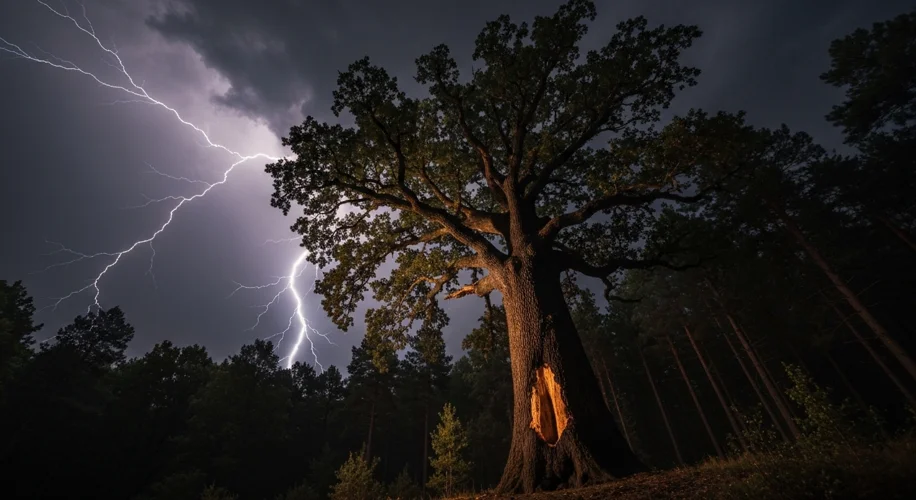Did you know that lightning strikes are a far greater threat to trees than many of us realize? It’s not just the dramatic wildfires that grab headlines; lightning itself is a silent force capable of felling vast numbers of trees.
As an atmospheric scientist, I’ve spent years studying the complex dance between weather and our environment. Lightning, a spectacular display of electrical discharge, is a critical part of that. While we often associate it with thunderstorms, its impact on our forests is profound and often underestimated.
Lightning strikes can kill trees in several ways. A direct hit can, of course, be fatal, burning the tree and its roots. But even indirect strikes can cause significant damage. The immense electrical current can travel through the soil, damaging the root system, which is vital for a tree’s survival. This damage can weaken the tree, making it susceptible to disease, pests, and other environmental stresses.
What’s even more concerning is how climate change might be influencing lightning activity. Research suggests that as the planet warms, we could see an increase in the frequency and intensity of thunderstorms. Warmer air holds more moisture, which fuels these powerful storms. More storms mean more lightning, and consequently, a greater risk to our forests.
This isn’t just about losing a few trees. Forests are vital ecosystems. They help regulate our climate, provide habitats for countless species, protect our watersheds, and support biodiversity. When lightning causes widespread tree mortality, it disrupts these critical functions.
Think about the ripple effect: a weakened forest is less resilient. It can become more prone to insect outbreaks or disease, leading to further degradation. This can impact everything from air quality to the availability of clean water in surrounding communities.
So, what can we do? Understanding these connections is the first step. While we can’t stop lightning, we can focus on building more resilient forests. This includes promoting diverse tree species, managing forest health to reduce fuel loads for fires that often follow lightning strikes, and supporting research into how our changing climate affects these natural systems.
It’s a reminder that the environmental challenges we face are interconnected. The science behind a thunderstorm can directly impact the health of our planet’s vital green spaces. By learning more and supporting informed conservation efforts, we can help protect our forests for the future.

